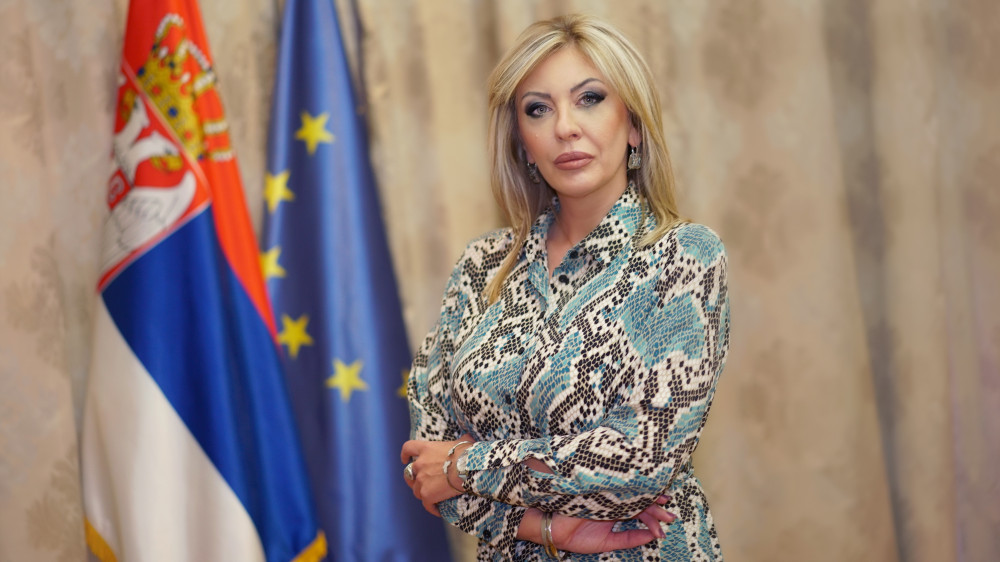
Jadranka Joksimović, Minister of European Integration, has told Politika that the revised regulations largely cover the interests of most of the economic sectors of Serbia, as well as of Serbia’s crucial trade partners.
Several days ago, the European Commission adopted a package of proposals for increasing the trade between the EU and 20 neighbouring countries, including Serbia. As stated, the goal is to achieve a faster recovery from the economic effects of the COVID-19 pandemic. What does this specifically mean for Serbia and can a broader trade with the EU be expected after this?
This issue is particularly important because of the comments, which arose in the public following this announcement, that, during the crisis, some European countries demonstrated that they were not able to ensure food security, and that such a move is one of the ways to reduce dependency on the import from the US and China.
Minister of European Integration Jadranka Joksimović has told Politika that the revised PEM rules largely cover the interests of most of the economic sectors of Serbia, as well as of Serbia’s crucial trade partners, particularly given the dominant importance of the European market for the overall scope of Serbia’s foreign trade, especially in terms of competitiveness and creating equal conditions for operating on the international market.
“The rules have been simplified and have become more flexible regarding the conditions for the acquisition of origin and modernised in terms of adjustment to the requirements of the global economy. What is particularly important – our exporters know best – is the introduction of the systems of full cumulation of origin and duty drawback for non-originating materials (except for textile), which significantly facilitates preferential trade”, said Joksimović. She has added that the revised rules will enable Serbian companies easier export to the EU under preferential conditions and vice-versa.
She believes that the more flexible rules of cumulation will contribute to easier economic integration and development of integrated supply chains in the countries in the region that apply them. On the other hand, according to her, these trade incentives for the development of a larger scope of trade with the EU lead to the rise of the EU competitiveness in the region. She adds that, in the procedural sense, the EU Council should adopt proposals, which will enable the EU to agree with its trade partners on introducing new rules to the relevant agreements.
The European Commission has recently recalled that goods with preferential origin meet the conditions for import under lower or zero tariff rates, depending on the favourable tariff treatment. The European Commission’s proposals will now modernise preferential trade agreements with 20 countries within the pan-Euro-Mediterranean region (PEM).
To recall, Serbia has already signed the Stabilisation and Association Agreement (SAA) with the EU which abolished customs duties on all industrial and agricultural products exported from Serbia into the EU through the application of autonomous trade measures, except for agricultural products protected by preferential tariff quotas (sugar, beef, wine, some species of fish).In that sense, the previous trade preferences that Serbia received are important. Does the new liberalisation being mentioned mean a potential amendment to parts of the SAA or abolition of quotas for certain products?
Joksimović recalls that, on the ninth meeting of the Joint Committee of the Regional Convention on pan-Euro-Mediterranean preferential rules of origin (PEM JC) held on 27 November 2019, the Republic of Serbia voted in favour of the proposed PEM JC decision on amending the regional Convention, which was not the case with all partners.“As regards the answer to your question: in this case, it is not about the quotas, it is about the revision of the SAA according to the established procedure. The amendment entails the adoption of amendments to Protocol III to the SAA – the definition of the term “products with origin” and methods of administrative cooperation. This Annex to the SAA does not refer to quotas, but it does cover all types of goods, raw materials and products,” explains Joksimović.
According to her, the point of this decision and the advantages it entails are best explained through a concrete example. Therefore, certain agricultural products, such as plants, edible fruits and vegetables, coffee, tea etc, which have been cultivated or harvested at the territory of one party to the agreement, will have the origin of that party even if they have been cultivated from the seeds, bulbs, rootstocks, buds and other parts of live plants imported from other parties. The new rules are more flexible and liberal, particularly regarding the level of non-originating material contents, which will enable easier acquisition of origin. With regard to industrial products (except for textile), the revised rules bring significant facilities for origin acquisition.
Joksimović has emphasised that a large number of specific rules has been deleted and that a possibility of using an alternative rule for the acquisition of origin has been introduced, which allows the importer to choose the easier condition for the acquisition of origin.
Author: Ivana Albunović
Source: Politika





